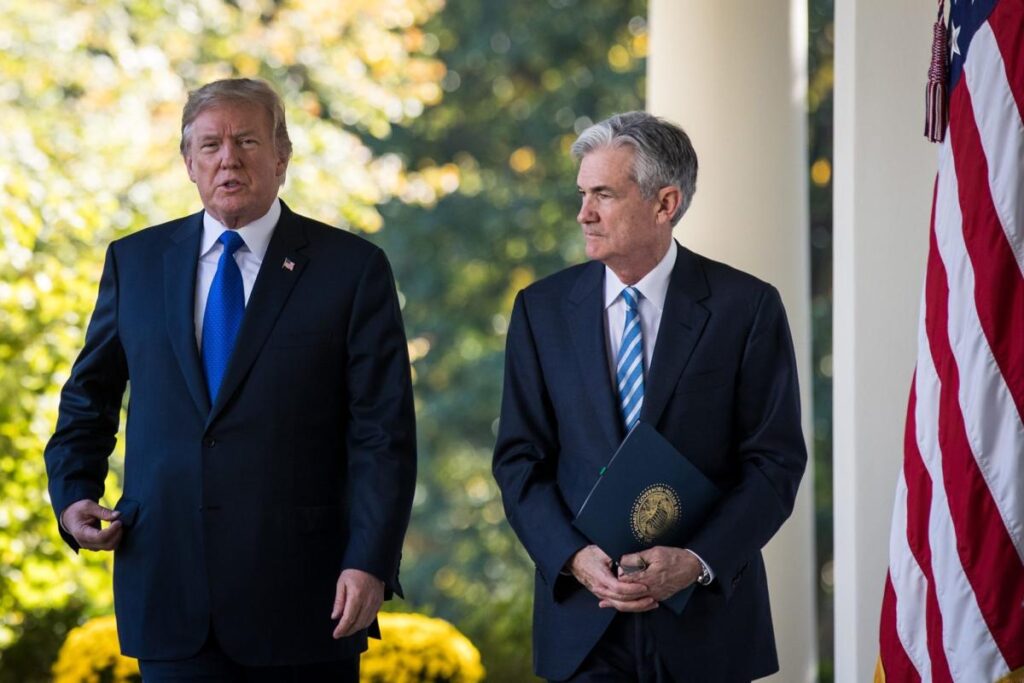The dynamics between Federal Reserve Chairman Jerome Powell and former President Donald Trump are once again thrust into the spotlight as Trump prepares for a potential return to the White House. Their history is marked by significant tension, especially regarding monetary policy. Powell was appointed by Trump in 2018, but as the Fed began to raise interest rates in response to a growing economy, Trump grew frustrated and at times considered dismissing Powell. Reports from the Wall Street Journal reveal that Powell expressed his intent to fight any such removal, even if it meant incurring personal legal costs. The question of his dismissal or resignation looms larger as Trump gears up to assume leadership once again.
The backdrop of their complicated relationship suggests that future confrontations over monetary policy are likely. Recently, Powell reaffirmed his stance on the legality of presidential authority over Fed leadership when asked if he would resign at Trump’s request; he flatly replied “no.” This reiteration of Fed independence, enshrined in law to insulate monetary policy from political pressure, indicates a potential for conflict. Senators like Mike Lee have contended that such independence can undermine executive control, calling for a reevaluation of the Fed’s role within the government. Meanwhile, voices within the business realm, including Tesla CEO Elon Musk, have shown support for Lee’s sentiments, suggesting a push to bring the Fed more under presidential influence.
While Trump and Powell have found some common ground in advocating for lower interest rates, a shift in economic conditions could reignite contention between them. Trump has openly stated that he feels he could have a superior grasp on monetary policy than Powell, emphasizing that he should have at least some level of input in Fed decisions. His previous remarks about potentially allowing Powell to complete his term are contingent upon Powell’s alignment with Trump’s expectations regarding monetary policy. Given that Powell’s term as Fed chair is set to expire in May 2026, the timeline for any potential conflicts is crucial for both men.
The specter of a “shadow Fed chair,” as suggested by Scott Bessent, an economic adviser to Trump, also complicates the narrative. This proposal would effectively reduce Powell’s influence by appointing a replacement early, resulting in Powell acting as a “lame duck.” While Bessent has faced criticism for this idea, he maintains that the credibility of the Fed could be enhanced through such a strategy. Historically, this independence somewhat eroded when former President Nixon pressured the Fed for looser monetary policies leading up to the 1972 elections, creating a legacy of tension between fiscal authorities and executive interests.
Legally, the Federal Reserve Act outlines that members of the Fed board may only be removed “for cause,” which provides Powell with some protection against potential attempts to forcibly remove him. However, as the political landscape shifts with a Republican-controlled Congress potentially willing to support Trump, revisiting the laws regarding the Fed’s governance could lead to unprecedented changes. Additionally, if Trump were to make any attempts to dismiss Powell, the situation would likely escalate to legal battles, possibly culminating in a Supreme Court case regarding the interpretation of the Fed’s authority and independence.
Looking ahead, it is clear that the relationship between Trump and Powell is fraught with potential conflict despite their current alignment on interest rates. The historical context of Fed independence, coupled with Trump’s assertions of superiority in economic matters, creates a potent mix for future clashes. With Powell’s commitment to his role seemingly unwavering, any challenges from Trump or his administration in the coming years will not only test the robustness of the Fed’s independent stance but could also reshape the broader framework of U.S. monetary policy amid changing political tides. The groundwork for a significant confrontation is being laid as these two influential figures prepare to navigate the complexities of economic governance in the near future.

